- Charles Monaco
- Albums and Singles
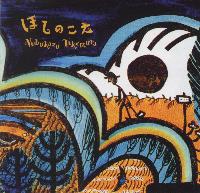 It isn't until the fifth track of 'Hoshi No Koe' that you hear musicstrongly resembling the majority of Nobukazu Takemura's previous work.In and of itself, this isn't such a bad thing. To continue to rely onthe same reverb-laden, scratched, looped, and manipulated CD soundswhich have come to be so closely associated with Takemura (as well ashis "Child's View" alias) would have been redundant, if still quitepleasant to listen to. With the release of the "Sign" 12-inch a fewmonths back, Takemura signaled a shift away from the avant-gardeindulgence of 15-minute tracks of skipping digital beats, and towardsan almost danceable mix of vocoder-enhanced vocals, 4/4 rhythms, andcatchy melodies - and which kept his trademark sound as coolornamentation to what was his most single-y track yet.
It isn't until the fifth track of 'Hoshi No Koe' that you hear musicstrongly resembling the majority of Nobukazu Takemura's previous work.In and of itself, this isn't such a bad thing. To continue to rely onthe same reverb-laden, scratched, looped, and manipulated CD soundswhich have come to be so closely associated with Takemura (as well ashis "Child's View" alias) would have been redundant, if still quitepleasant to listen to. With the release of the "Sign" 12-inch a fewmonths back, Takemura signaled a shift away from the avant-gardeindulgence of 15-minute tracks of skipping digital beats, and towardsan almost danceable mix of vocoder-enhanced vocals, 4/4 rhythms, andcatchy melodies - and which kept his trademark sound as coolornamentation to what was his most single-y track yet.On 'Hoshi No Koe', Takemura shifts back into the avant-garde, whichagain, in and of itself, isn't such a bad thing. Unfortunately, themanner in which he does so is. Gone are the so fresh, so cleancompositions, walls of sound, and floods of echoes perfected on thelikes of 'Funfair' and 'Scope.' Instead, here we hear a handful ofwell-constructed and intriguing tracks separated by what comes off verystrongly as nothing but filler: throwaway Casio noodling on "One Day,""White Sheep and Small Light," and "A Theme For Little Animals";wanna-be clicky minimalism on "Honey Comb" and "Trampoline"; and slowmeticulous beatless repetition on "Stairs In Stars" and "In TheRoom-Roof-Wood". Some of these tracks are less offensivelynot-thought-through than others, but all display a startling lack ofcleverness and ingenuity, and what is most vexing, a seeming lack ofeffort on the part of Takemura, who plays all instruments and producedall tracks on the album. It is one thing to not exactly "get" the newdirection in which a musician wants to take you, but it is anotherthing to not understand at all why he wants to take you there. This isthe case with 'Hoshi No Koe' - there is a clear lack of directionthroughout the overly lengthy 78 minutes that would probably surpriseanyone who has tracked Takemura's work to this point.
This is not to say that his genius doesn't manage to shine through atleast a few times. "Sign" is on the album (the aforementioned track 5)and its the obvious winner of the bunch, and "Anemometer" is asimilarly terrific (if unnecessarily lengthy) melding of bouncy beatsand trademark Takemura sounds. "A Chrysalis" starts out sounding likeexperimental wanking, but slowly and beautifully evolves over its 17minutes into a downtempo exploration of rhythm and tone that wouldn'tbe out of place on 'Scope'. Finishing the CD is the wonderful "TheVoice Of A Fish," which is similarly subdued, subtle, and complex - allcharacteristics which are in short supply on most of the previous tentracks. For whatever reason, these traits - which made Takemura soexciting on previous efforts - are anomalies here.
samples:
Read More
- Administrator
- Albums and Singles
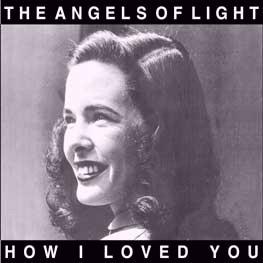 The Angels of Light are the current song writing device of Michael Gira of Young God Records. How I Loved You, follow-up to 1999's superb debut New Mother, commits to tape many of the songs from the now legendary first tour and others written since. It is a collection of love songs of sorts with references to various women and Gira's parents, whom grace the front and back cover of the digipack.
The Angels of Light are the current song writing device of Michael Gira of Young God Records. How I Loved You, follow-up to 1999's superb debut New Mother, commits to tape many of the songs from the now legendary first tour and others written since. It is a collection of love songs of sorts with references to various women and Gira's parents, whom grace the front and back cover of the digipack.
Each of the ten songs begins with Gira's inimitable voice - from whisper to caterwaul - and acoustic guitar and are then tastefully embellished by the band with lap steel, percussion, organ, bass, electric guitar, piano, accordion, melodica, female and male backing vocals. "Untitled Love Song" sways gently and lovingly with perhaps the most beautiful melody and straightforward, heartfelt lyric of Gira's career to date. "My True Body" gallops like a wild stallion in double time, Gira vehemently declaring "I can see the footsteps of Jesus!" "Song for Nico" is reminiscent of Swans with warm female 'la la la's. "New City in the Future" and "Two Women" are the epics, nearly 12 minutes apiece, both deeply moody with passages of mantra and crescendo. "My Suicide" swaggers like a Johnny Cash spiritual, Gira confessing "I hate you for your love, and I hate you for your sex" in a droll croon. "New York Girls" quietly assesses the qualities of the feminine urbanite, culminating with several minutes of instrumental expedition.
Overall How I Loved You is relatively soft and restrained save for a few moments, Gira's songs capturing and conveying a pure and natural emotion that's truly beautiful. It's yet another masterpiece. The Angels of Light will likely tour later this year. Check the new Young God site for information.
Read More
- Administrator
- Albums and Singles
 The debut full-length from Belgium's Scratch Pet Land resembles what anaudio Rorscharch Test might sound like. Fans of the quirky Sonig soundfrom groups like Vert, Mouse On Mars and Wang Inc. should be warnedthat the proverbial happy blippy sounds don't really jump in until thefourth track and don't stay very long as this German duo seems to havean amazingly short span of attention. Given the chance however, thisfull-length debut is quite pleasing, with creative crack addict-likemelodies and noisy audio scribbles. There are spots where the soundsappear to be strange mutated samples of kids hiccuping in a playground,short tunes of randomized aural splotches, or a musicallyimpressionistic walk across a stained glass carpet crunching betweenyour feet. When the melodies do arrive they stand as shining moments ofan almost Kraftwerkian tributary nature. Forty-two minutes of randomtest tones, pots, pans, circus animals, babies and flying saucer soundslater I'm left somewhat confused, but rather satisfied.
The debut full-length from Belgium's Scratch Pet Land resembles what anaudio Rorscharch Test might sound like. Fans of the quirky Sonig soundfrom groups like Vert, Mouse On Mars and Wang Inc. should be warnedthat the proverbial happy blippy sounds don't really jump in until thefourth track and don't stay very long as this German duo seems to havean amazingly short span of attention. Given the chance however, thisfull-length debut is quite pleasing, with creative crack addict-likemelodies and noisy audio scribbles. There are spots where the soundsappear to be strange mutated samples of kids hiccuping in a playground,short tunes of randomized aural splotches, or a musicallyimpressionistic walk across a stained glass carpet crunching betweenyour feet. When the melodies do arrive they stand as shining moments ofan almost Kraftwerkian tributary nature. Forty-two minutes of randomtest tones, pots, pans, circus animals, babies and flying saucer soundslater I'm left somewhat confused, but rather satisfied. samples:
Read More
- Administrator
- Albums and Singles
 Thomas Brinkmann is a prolific producer of numerous minimal/experimental techno platters, both digital and analogue. His tools here are simple but unique: a knife, a pile of old records, 2 turntables, a mixer, an isolator and an effects unit. If I'm to understand the process correctly, Brinkmann literally cut the locked grooves into the records and then played and mixed them to create the 10 4-7 minute, binary titled tracks.A circular rhythmic shuffle of thuds, thumps, scratches, static pops and clicks is not only the foundation, it's the entirety of each track. The first and last tracks also contain minute vocal tidbits. Brinkmann seems intent on culling music from where there is no music to create a sort of 'techno'. "0011" becomes increasingly abrasive as the revolutions increase. "0100" playfully plasters high RPM skips. "0101" manages an almost dub resonance with reverberated pops and a gentle energy hum. "1010" simply declares "Berlin" a few times in a boisterous voice amidst the clutter ... perhaps an unnecessary reminder of the most likely place on Earth that such music would come from. Altogether "Klick" is rather clinical but surprisingly varied and enjoyable. There's plenty of groove to be found and enjoyed within the grooves.
Thomas Brinkmann is a prolific producer of numerous minimal/experimental techno platters, both digital and analogue. His tools here are simple but unique: a knife, a pile of old records, 2 turntables, a mixer, an isolator and an effects unit. If I'm to understand the process correctly, Brinkmann literally cut the locked grooves into the records and then played and mixed them to create the 10 4-7 minute, binary titled tracks.A circular rhythmic shuffle of thuds, thumps, scratches, static pops and clicks is not only the foundation, it's the entirety of each track. The first and last tracks also contain minute vocal tidbits. Brinkmann seems intent on culling music from where there is no music to create a sort of 'techno'. "0011" becomes increasingly abrasive as the revolutions increase. "0100" playfully plasters high RPM skips. "0101" manages an almost dub resonance with reverberated pops and a gentle energy hum. "1010" simply declares "Berlin" a few times in a boisterous voice amidst the clutter ... perhaps an unnecessary reminder of the most likely place on Earth that such music would come from. Altogether "Klick" is rather clinical but surprisingly varied and enjoyable. There's plenty of groove to be found and enjoyed within the grooves.
samples:
 
Read More
- Administrator
- Albums and Singles
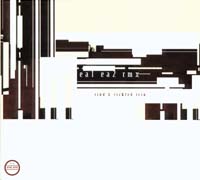 Taking a break between albums, the Tied & Tickled Trio have released a brief 8-song collection of remixes from last year's "EA1 EA2" album. The disc is released through Morr Music in Germany and features remixes by Console, Kandis, Max.Ernst and others. For the most part the remixes basically go one of two ways. Some of the tracks are pumped up discotheque versions of the songs while others take a route accenting the more jazzy elements. The Max.Ernst cuts are quite watery with obnoxiously repetitious horn loops while the Console mix flows nicely with an element of technological mastery.
Taking a break between albums, the Tied & Tickled Trio have released a brief 8-song collection of remixes from last year's "EA1 EA2" album. The disc is released through Morr Music in Germany and features remixes by Console, Kandis, Max.Ernst and others. For the most part the remixes basically go one of two ways. Some of the tracks are pumped up discotheque versions of the songs while others take a route accenting the more jazzy elements. The Max.Ernst cuts are quite watery with obnoxiously repetitious horn loops while the Console mix flows nicely with an element of technological mastery.
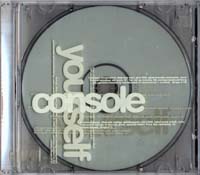 Console, a.k.a. Martin Gretchmann a.k.a. 'that guy in the Notwist who -isn't- in the Tied & Tickled Trio' has also released a disc of remixes, but this one's from the other side of the mixing board. 'Console Yourself' is eight tracks of other peoples songs remixed by Gretchmann, over the course of three years, including an overlap from the Tied & Tickled remix disc. Also featured on the disc are remixes of Isan, Barbara Morganstern, Ammer/Hage and even a Console song remixed by Console. Gretchmann's mixes stand out as he's got a keen ear for when to keep a loop going and when to kill it. While both of these discs are good to have for collectors, they're nowhere to start for people who aren't existing fans already. I personally recommend the most recent full-length albums from each of the three, Console's "Rocket in the Pocket", Tied & Tickled Trio's "EA1 EA2" and of course the Notwist's "Shrink." With any luck at least one of these entities will release something excellent later on this year.
Console, a.k.a. Martin Gretchmann a.k.a. 'that guy in the Notwist who -isn't- in the Tied & Tickled Trio' has also released a disc of remixes, but this one's from the other side of the mixing board. 'Console Yourself' is eight tracks of other peoples songs remixed by Gretchmann, over the course of three years, including an overlap from the Tied & Tickled remix disc. Also featured on the disc are remixes of Isan, Barbara Morganstern, Ammer/Hage and even a Console song remixed by Console. Gretchmann's mixes stand out as he's got a keen ear for when to keep a loop going and when to kill it. While both of these discs are good to have for collectors, they're nowhere to start for people who aren't existing fans already. I personally recommend the most recent full-length albums from each of the three, Console's "Rocket in the Pocket", Tied & Tickled Trio's "EA1 EA2" and of course the Notwist's "Shrink." With any luck at least one of these entities will release something excellent later on this year.
 
samples:
- Hip Young Things - 1¬Ω - Console remix
- Barbara Morgenstern - Das Wort - Console + Hometrainer remix
- Tied & Tickled Trio - EA1 EA2 nr. 10 - Wechsel Garland remix
- Tied & Tickled Trio - Utrom mix - Kandis remix
 
Read More
- Administrator
- Albums and Singles
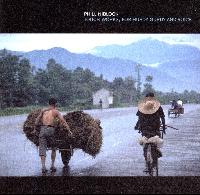 Phill Niblock is a drone specialist. Everything he composes pursues the same drone idea but he varies the textures drastically by utilising different musical instruments. His pieces are supremely mind altering, and this release on the continually engaging and intriguing Touch art label is the most hallucinogenic dense and intense recording I've heard from him, or anyone else for that matter.
Phill Niblock is a drone specialist. Everything he composes pursues the same drone idea but he varies the textures drastically by utilising different musical instruments. His pieces are supremely mind altering, and this release on the continually engaging and intriguing Touch art label is the most hallucinogenic dense and intense recording I've heard from him, or anyone else for that matter.
The CD opens with 'Hurdy Hurry', a stunning hurdy gurdy piece constructed from samples of Jim O'Rourke's playing, recorded in New York at Robert Poss' studio (Band of Susans). This medieval stringed instrument played by cranking a resined wheel seems tailor made for droning, and O'Rourke has been known to drone on himself a bit in ages past. This makes his own early droneworks 'Remove The Need' and 'Disengage' seem like mere practice, but that practice has certainly paid off handsomely. At a cursory listen 'Hurdy Hurry' might seem like fifteen of continuous drone, but Niblock weaves together held tones with exact mathematical relationships to each other, and there is a constant slow evolution and almost imperceptibly gradual increase in mass as the piece unfurls.
It continues with two different versions of what could be Niblock's masterwork, a vocal piece 'AYU'. The letters A, Y and U are hummed by baritone Thomas Buckner and arranged into a continually shifting corridor of sampled sound twenty four voices thick. The second version adds a live throat singing performance from Buckner, pitch shifted one and two octaves down and multiplied fifteen times over. Imagine massed temples of Buddhist monks humming universal nirvana alphabet keys condensed by a sampler into the digital cyberlanes.
Niblock is described as 'the forgotten minimalist' in the extensive and illuminating sleevenotes, which include an interview discussing his sound reproduction techniques. After hearing this, it's all the others that'll be more likely to slip from memory.
 
Read More
- Administrator
- Albums and Singles
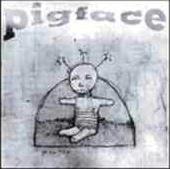 Ah, the obligatory 'best of' album! Chances are you've sampledsomething from, but perhaps not something from each era of, Pigface'sdecade deep oeuvre. The history of Pigface is inextricably tied todrummer / ringleader / Invisible Records head honcho Martin Atkins withsome 100+ members (as listed in the insert) having passed through therevolving door. The talent amassed on stage and in the studio isstaggering and includes most everyone in the rock and 'industrial' rockunderground. The musical result is varied and impossible to pigeonhole,taking in elements of punk, funk, noise, dance, etc. Disc 1 collects 20(!) re-edited, re-mastered tracks representing the 4 studio albums,emphasis on "Fook" and "Notes From the Underground", and a few of theremix/live EPs and albums. The editing merely tightens up everythingfor maximum disc capacity and the remastered sound is most clearlyevident on the most dated studio material, "Suck" and "Point Blank"from "Gub". It all sounds great and flows well through the years with afine track selection courtesy of fan submissions. Disc 2 is the realincentive for long time fans with 9 of the 15 tracks being previouslyunreleased nuggets: brief interviews (Atkins, Ogre, William Tucker),songs either aborted or in an infant form ("Dribble", parts of whichbecame "Empathy", "Taiko" which became "Asphole"), re-mixes (includingnew versions of "Chickasuarus" and "Hips, Tits, Lips, Power"), and anamusing radio ID. These include Dirk Flanigan, Astrid Welz, Jim Marcus,Andrew Weiss/Ween, Black Francis and Robert Santiago of The Pixies ...some accomplished pieces and others spontaneous, fun and loose jams."Preaching to the Perverted" does just that but does it with style. Anincarnation of Pigface will likely tour later this year.
Ah, the obligatory 'best of' album! Chances are you've sampledsomething from, but perhaps not something from each era of, Pigface'sdecade deep oeuvre. The history of Pigface is inextricably tied todrummer / ringleader / Invisible Records head honcho Martin Atkins withsome 100+ members (as listed in the insert) having passed through therevolving door. The talent amassed on stage and in the studio isstaggering and includes most everyone in the rock and 'industrial' rockunderground. The musical result is varied and impossible to pigeonhole,taking in elements of punk, funk, noise, dance, etc. Disc 1 collects 20(!) re-edited, re-mastered tracks representing the 4 studio albums,emphasis on "Fook" and "Notes From the Underground", and a few of theremix/live EPs and albums. The editing merely tightens up everythingfor maximum disc capacity and the remastered sound is most clearlyevident on the most dated studio material, "Suck" and "Point Blank"from "Gub". It all sounds great and flows well through the years with afine track selection courtesy of fan submissions. Disc 2 is the realincentive for long time fans with 9 of the 15 tracks being previouslyunreleased nuggets: brief interviews (Atkins, Ogre, William Tucker),songs either aborted or in an infant form ("Dribble", parts of whichbecame "Empathy", "Taiko" which became "Asphole"), re-mixes (includingnew versions of "Chickasuarus" and "Hips, Tits, Lips, Power"), and anamusing radio ID. These include Dirk Flanigan, Astrid Welz, Jim Marcus,Andrew Weiss/Ween, Black Francis and Robert Santiago of The Pixies ...some accomplished pieces and others spontaneous, fun and loose jams."Preaching to the Perverted" does just that but does it with style. Anincarnation of Pigface will likely tour later this year.
samples:
Read More
- Administrator
- Albums and Singles
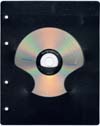 The second release in the over-priced under-packaged series of livediscs on Mute's Jenny Divers label is another concert from Panasonicrecorded in 1995. This recording however was from one show in London,(as opposed to the two-show in NY release reviewed a few weeks back).The sound is much different as the group knows how to cater to thedifferences in fans and concert goers in both cities. While the NY showwas full of meaty bass-heavy beats, this disc is littered with moreintrospective art-school class "A" electronica, with much aim to pleasethe stuffy London chin-scratchers searching for irony in an electronicconcert. The disc is considerably shorter, totalling only 53 minutesbut thankfully is indexed track-by-track. Once again, only the seriousfans need to worry about shelling out the stupid cash to pay for thisslab of black plastic accompanying the CD, each without artwork.
The second release in the over-priced under-packaged series of livediscs on Mute's Jenny Divers label is another concert from Panasonicrecorded in 1995. This recording however was from one show in London,(as opposed to the two-show in NY release reviewed a few weeks back).The sound is much different as the group knows how to cater to thedifferences in fans and concert goers in both cities. While the NY showwas full of meaty bass-heavy beats, this disc is littered with moreintrospective art-school class "A" electronica, with much aim to pleasethe stuffy London chin-scratchers searching for irony in an electronicconcert. The disc is considerably shorter, totalling only 53 minutesbut thankfully is indexed track-by-track. Once again, only the seriousfans need to worry about shelling out the stupid cash to pay for thisslab of black plastic accompanying the CD, each without artwork. samples:
Read More
- Administrator
- Albums and Singles
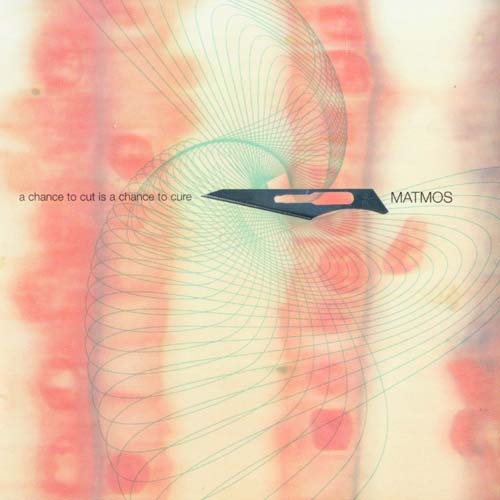 Kid 606 wasn't far from the truth when he claimed that "Matmos are the A-Team of electronica" — the new full-length album is a triumph for this San Franciscan duo. Their fourth album follows along the progression taken with 'The West,' moving even further away from random technological fuckery on their first two to create a cohesive, conceptual, organized result.
Kid 606 wasn't far from the truth when he claimed that "Matmos are the A-Team of electronica" — the new full-length album is a triumph for this San Franciscan duo. Their fourth album follows along the progression taken with 'The West,' moving even further away from random technological fuckery on their first two to create a cohesive, conceptual, organized result.
The sound sources and concepts here all involve various surgical/medical practices and procedures, beginning with liposuction and continuing with eye surgery, acupuncture, and ending in plastic surgery. Surgical instruments have become musical instruments and have been carefully interwoven with organic and electronic musical instruments and sound samples recorded directly in the medical offices. The two head surgeons Drew Daniel and Martin Schmidt have also pulled in specialists like Cyclobe/Coil's Stephen Thrower on clarinet, spoken contributions from instrumentalists Kid 606 and Hrvatski, plus various other friends scattered around the album. While the medical theme is global on this release, the styles and moods change impressively between the seven songs. The group has turned liposuction into a beefy bass-heavy post-kraut jam on the album's opener, "Lipostudio". On "Spondee" the duo have morphed various spondees (look it up in the dictionary) and combined them with corresponding sound effects with hearing test tones and cranked out a compelling butt-shaking house tune. "For Felix" (first exhibited on tour last year along with nearly all of the songs on this disc) is an intricate 5+ minute piece crated from bowing and plucking a rat cage, dedicated to their late rat (and all the caged lab rats across the world who die in the name of medicine). Ambient low-end sounds created from connective tissue provide a warm foundation for the percussive sounds of human skull and artificial teeth on "Memento Mori", and the brilliant head-nodding classic "California Rhinoplasty" closes the disc with a ten minutes of plastic surgery samples in an evolving multi-themed epic. 'A Chance to Cut,...' is quite an accomplishment as the group has brought the term 'album' back into the phrase 'concept album' - the recording easily graces two sides of a record totalling a comfortable 46 minutes. Matmos has also once again brought a bold amount of personality and enthusiasm to their flawlessly competant mix of electronical sorcery, something the Euro electronica elite seem to be lacking after all these years. It's not minimal, it's not abstract, it's a damned good solid record.
 
samples:
Read More
- Administrator
- Albums and Singles
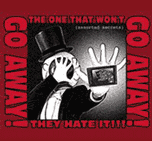 The band that made aname for themselves by loudly invoking their own anonymity andobscurity since 1972 is not really about secrets anymore. Many of theirprojects from the late 1990s up until now have been very high-profile,with backing from large software companies, international tours, andtons of product ranging from the typical t-shirts to little statuettesand build-'em-yrself model kits. Even the faces and identities of theband members — once the carefully guarded secret around which theybased their marketing — are apparent enough to the fan who does alittle bit of research. 'The Residents' has become, quite deliberatelya brand that is applied to a range of product. That's why the groupwants to be sure that the product with their brand name on it is up totheir quality standards. When it isn't, as in the case of this CDreissue of the "Assorted Secrets" cassette of rehearsals from 1984,when they lose a bit of that control, is when the music gets the mostinteresting.
The band that made aname for themselves by loudly invoking their own anonymity andobscurity since 1972 is not really about secrets anymore. Many of theirprojects from the late 1990s up until now have been very high-profile,with backing from large software companies, international tours, andtons of product ranging from the typical t-shirts to little statuettesand build-'em-yrself model kits. Even the faces and identities of theband members — once the carefully guarded secret around which theybased their marketing — are apparent enough to the fan who does alittle bit of research. 'The Residents' has become, quite deliberatelya brand that is applied to a range of product. That's why the groupwants to be sure that the product with their brand name on it is up totheir quality standards. When it isn't, as in the case of this CDreissue of the "Assorted Secrets" cassette of rehearsals from 1984,when they lose a bit of that control, is when the music gets the mostinteresting. The band is obviously very interested in its appearance, not just withregards to identity-obscuring costumes, but in the release only ofconcept albums of the highest technical sound quality. Ideas that nevermade it into album form are hardly ever made public or even discussed,and rehearsal tapes are almost unheard of. Their material from the1970's is perpetually being re-recorded on newer electronicinstruments, remastered according to their ever-higher standards, infive-speaker surround sound. The Residents immediately regrettedreleasing something that was as unfinished and poorly recorded (thetunes were, after all, only for their own rehearsal) as these tunesfrom "Fingerprince", "Mark of the Mole" and "Tunes from Two Cities".These songs would eventually become overdubbed, EQ'd, and edited andcleaned up, but the imperfection evident on "Assorted Secrets" linksthe songs more to the post-punk and DIY bedroom-electronic music thatwas happening at the time. One complaint about the Residents' post-1979output is that it's too sterile. That is certainly not the case here.Thus the reissue exists due to massive pleading by their fans, and notbecause the band is proud that it exists. The original tapes werescrubbed as much as possible for the reissue, but hidden in a cardboardwrapper printed with warnings like "Please go away" and "They hateit!". The band's name does not even appear on the wrapper, but theireyeball-in-a-tophat logo does, albeit with the iris covered with alarge black bar of the type that government informants use to protecttheir identity on TV news programs. The reissue is printed in arelatively tiny pressing of 1200, perhaps with the hope that only thatthe die-hard fans will hear it and stop asking about it, and thegeneral public won't even know of its existence.
The last thing the band probably wants is for some reviewer to suggestto his readers to run out and buy this CD, one of the most excitingdocuments of the band yet. The low recording quality and the rawness ofthe playing makes the Residents sound like a performing band comprisedof real people, as opposed to the slick and streamlined, high-techhi-fidelity group that the band wants you to hear. Four distinctplayers can be heard making mistakes, standing too close to themicrophone, saturating the tape at times, sounding rough and alive in away that's been uncommon for the last two decades of the Residents'recorded career. After all, the Residents are a band that printed awarning right on the back cover of their debut CD, "Meet theResidents", to not buy it if you hadn't already heard the subsequentalbums! Clearly, they shouldn't be the ones to judge. In most cases, Iprefer the versions of the songs on "Assorted Secrets" to the ones thatmade it onto the records. The reason they don't want you to hear"Assorted Secrets" is the same reason why it's great. It contains thepassion of a band that's playing simply to hear themselves, not caringabout what their audience will think. When the band started out, theylaboured under their "Theory of Obscurity", which stated that anartist's best work was done without an audience in mind. Their attemptto downplay "Assorted Secrets" proves that they don't really believethat anymore. Available only at their website, www.ralphamerica.com.
Read More
- Administrator
- Albums and Singles
 Somewhere way up north,an Opera is coming together featuring Stockport's finest. V/Vm wasthere in secrecy at the scene of the crime: the Crown Inn, MD in hand,stealing the sounds coming from the stars. Little did they know thattheir secret revolutionary plans were to be documented, exposed,reproduced and distributed. Four contributions from five of the starshave fit on this slab of thick black wax, seven inches in diameter(where would the music community be if everybody turned to metric,huh?) Meatgrowth, Miss Bill Apauling, Mrs. Attitude, and a stunningduet between White Sox and Sandals have all made their appearances.Select audio transition periods have been carefully inserted withlittle intervention from the V/Vm Test Records label. Listening, Ithink I've heard Sandals before on the AuralOffalWaffle - recordingoriginally as CC White, this stellar singer is now performing duetsunder a sneaky new guise. I don't know what the full opera is going tosound like but it's destined to become one of the year's best of theworst.
Somewhere way up north,an Opera is coming together featuring Stockport's finest. V/Vm wasthere in secrecy at the scene of the crime: the Crown Inn, MD in hand,stealing the sounds coming from the stars. Little did they know thattheir secret revolutionary plans were to be documented, exposed,reproduced and distributed. Four contributions from five of the starshave fit on this slab of thick black wax, seven inches in diameter(where would the music community be if everybody turned to metric,huh?) Meatgrowth, Miss Bill Apauling, Mrs. Attitude, and a stunningduet between White Sox and Sandals have all made their appearances.Select audio transition periods have been carefully inserted withlittle intervention from the V/Vm Test Records label. Listening, Ithink I've heard Sandals before on the AuralOffalWaffle - recordingoriginally as CC White, this stellar singer is now performing duetsunder a sneaky new guise. I don't know what the full opera is going tosound like but it's destined to become one of the year's best of theworst.samples:
- Mrs. Attitude / White Sox and Sandals - Start Walking / Feel Your Way (In My Direction)
- Meatgrowth - Oh No, No Way
- Miss Bill Apauling - Same Place, the Same Cafe, the Same Time
Read More


